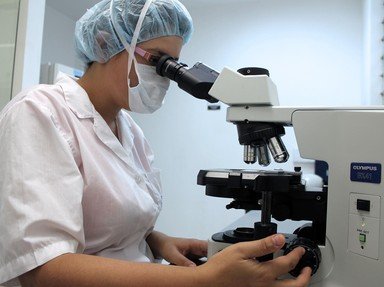Quiz Answer Key and Fun Facts
1. What is histology?
2. What is the most commonly used fixative for routine histology?
3. Which of the following is NOT a risk to health and safety in a histology laboratory?
4. To stain tissue, it must first be cut into thin sections, usually between 2 and 8 micrometres thick. What piece of equipment is needed to cut these sections?
5. Most stains used in histology (and biology and microbiology) come from which industry?
6. The most commonly used stain for animal (including human) tissue is the H&E. What does H&E stand for?
7. What kind of microscopy is used to examine stained tissues?
8. Which of the following in NOT true of mordants?
9. What is a common stain used for plant tissue?
10. What precautions should be taken in the histology laboratory?
Source: Author
lateonenite
This quiz was reviewed by FunTrivia editor
crisw before going online.
Any errors found in FunTrivia content are routinely corrected through our feedback system.

